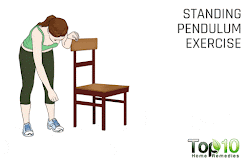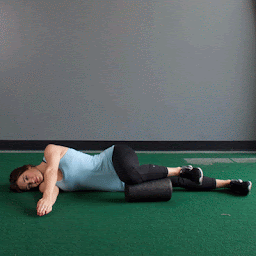shoulder Joint, The most mobile joint of human body, at the cost of stability. It is one of four joints that comprise the shoulder complex.The shoulder is composed of a network of bones, joints, and soft tissues that make this large range of motion possible.
- Frozen Shoulder
- Proximal Humerus ( Shoulder) Fracture.
- Rotator Cuff Injuries.
- Shoulder Arthritis.
- Shoulder Labrum Tear.
- Shoulder Pain, Instability and Dislocations.
Top Exercises and Stretch to Release Shoulder Pain and Tightness
NECK STRETCH
- Keep your head squarely over your shoulders and your back straight.
- Slowly turn your head to the right until you feel a stretch in the side of your neck and shoulder.
- Hold the stretch for 15-30 seconds, and then slowly turn your head forward again.
- Repeat on your left side. Do up to 10 sets.
PENDULUM STRETCH
- Relax your shoulders. Stand and lean over slightly, allowing the affected arm to hang down.
- Swing the arm in a small circle — about a foot in diameter.
- Perform 10 revolutions in each direction, once a day.
- As your symptoms improve, increase the diameter of your swing, but never force it
CROSS BODY SHOULDER STRETCH
- Start standing or sitting tall.
- Grab one arm above your elbow with your opposite hand, and pull it across your body toward your chest until you feel a stretch in your shoulder.
- Make sure to keep your elbow below shoulder height.
- Hold for at least 30 seconds and then repeat on the other side
CHILD POSE
- Sit on your heels on a yoga mat or on the floor.
- Either keep your knees together or apart.
- Slowly, bend forward by lowering your forehead to touch the floor, exhaling as you do so.
- Keep your arms alongside your body.
SLEEPER STRETCH
- Lay on your side with your bottom arm bent upward at a 90-degree angle, fingers pointing toward the ceiling.
- With your other arm, gently apply downward pressure until you feel a stretch in your shoulder.
- Hold the stretch for ten seconds and perform two sets of ten reps on each arm.
- It is important to ensure your body does not roll forward or backward off your side during the exercise, as this can cause injury.
OVERHEAD TRICEPS AND SHOULDER STRETCH
- Start standing or sitting tall.
- Bring one arm overhead and drop your forearm behind you, resting it on your back between your shoulder blades.
- With your other hand, grab right above your bent elbow and pull gently, until you feel a stretch in your shoulder and the back of your arm.
REVERSE SHOULDER STRETCH
- Reverse Shoulder Stretch Stand upright and clasp your hands together behind your back.
- Slowly lift your hands upward.
- lean forward while lifting your hands upward.
- Hold the stretch position for a minimum of 20 seconds
SIDE LYING THORACIC ROTATION
- Start lying on your right side with your right leg straight and a foam roller underneath your left knee.
- Extend your arms to the right. Stack your left hand on top of your right hand.
- Without moving your left leg, lift your left arm and begin to rotate toward the left. Your head should follow the motion of your arm.
- Rotate as far as you can without moving your pelvis and taking your knee off the foam roller. This should not hurt. If it does, decrease your range of motion. This counts as one rep.
- Complete 10 to 15 reps on each side.
Dr. Narendra Physiotherapy and Rehabilitation
Daivik Hospital , Near vishal megha mart, New Roshanpura
Najafgarh, New Delhi- 110043
7426078501, 9610738999








Comments
Post a Comment
If you have any inquiry please let me know.